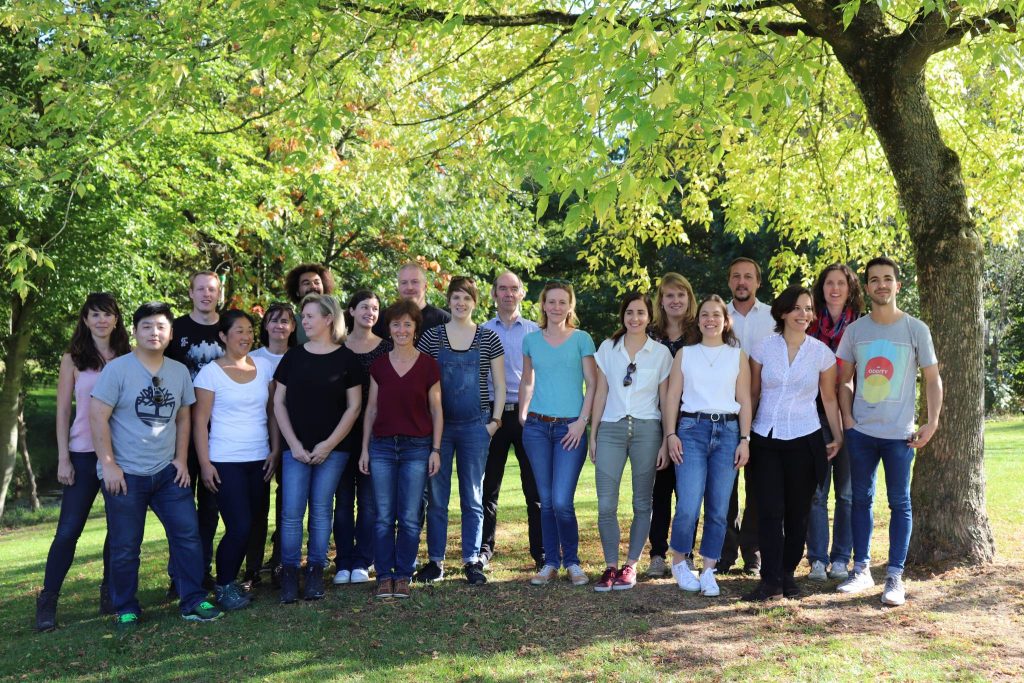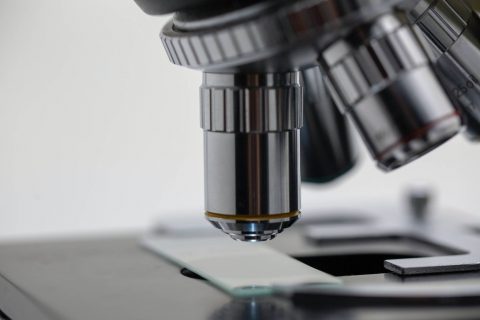“You have to have a passion for it; to have a long-term view. It can be difficult to
explain to your family what you did that day because it involves such incremental steps.
You have to be able to cope with disappointment. Be curious. Resilient. For example, this study
was started four years ago and we couldn’t have done it faster.”
This is Dr. Anke Van der Perren, the lead scientist of a KU Leuven team that recently published the results of a research project that could lead to improved diagnostics, treatment and even … one day … a cure for Parkinson’s Disease and other neurodegenerative disorders.
 Dr. Van der Perren works in the Laboratory for Neurobiology and Gene Therapy, overseen by Professor Veerle Baekelandt, who has been investigating the brain and Parkinson’s Disease for over 20 years:
Dr. Van der Perren works in the Laboratory for Neurobiology and Gene Therapy, overseen by Professor Veerle Baekelandt, who has been investigating the brain and Parkinson’s Disease for over 20 years:
“I am still amazed by how complex it is. (Parkinson’s Disease) is understudied compared to Alzheimer’s Disease or cancer and we need more basic research. We still lack a lot of knowledge. It’s like a big puzzle and every piece that can be found and placed helps to build the full picture.”
(Photo: the Laboratory for Neurobiology and Gene Therapy research team. Professor Baekelandt is wearing a burgandy t-shirt and jeans in the first row. Dr Van der Perren is at the far left-hand side of the second row in a pink top.)
THE SHAPE MATTERS
The ‘piece of the puzzle’ that the KU Leuven team published in April explains how the accumulation of one particular protein in the brain is at the root of three very different conditions. Until recently, nobody understood how α-synuclein protein deposits, found in the brains of patients with Parkinson’s disease (PD), multiple system atrophy (MSA) and dementia with Lewy bodies (DLB) could result in such different clinical disorders. The KU Leuven team showed that it is the shape of the protein that determines the clinical picture.
“Just as different lego blocks make different buildings, so the different shapes of the protein determine the disease,” said Professor Baekelandt in conversation with the Demoucelle Parkinson Charity last month.
Parkinson’s disease affects around two percent of the population over 60 years old, approximately 40,000 people in Belgium. The condition manifests itself mainly in motor problems. Dementia with Lewy bodies is less common (0.4 percent of people over 65), but is still the second most common form of dementia, after Alzheimer’s disease. Multiple system atrophy is a rare but extremely aggressive disease for which there is virtually no treatment. It causes a variety of health issues, including general pain, bladder problems and low blood pressure, as well as motor problems. Most patients succumb to the disease within five to ten years.
Building on an earlier study by the team using test-tube ‘grown’ proteins in which the shapes had first been identified, Dr. Van der Perren worked together with the French National Centre for Scientific Research (CNRS) and Imperial College London to see whether the different shapes were present in human tissue from deceased patients and what impact these different forms had on disease development in lab animals (rats).
 The researchers were able to identify two shapes of the protein: a helical one in MSA and Parkinson’s disease, and a cylindrical one in DLB. The shape also determined the severity of the disease symptoms: in MSA (the helical shape) the symptoms occurred more quickly and aggressively, while in LBD (the cylindrical shape) they were more moderate.
The researchers were able to identify two shapes of the protein: a helical one in MSA and Parkinson’s disease, and a cylindrical one in DLB. The shape also determined the severity of the disease symptoms: in MSA (the helical shape) the symptoms occurred more quickly and aggressively, while in LBD (the cylindrical shape) they were more moderate.
“We have found the fingerprint of the disease,” said Professor Baekelandt. “In the future this will allow a better diagnosis and, in principle, we could discover molecules or antibodies that could recognise the specific shape and enable very targeted treatment. We need α-synuclein so it will be important to have a direct treatment that targets only the toxic α-synuclein.”
However, while Professor Baekelandt and Dr. Van der Perren are very sure that the different shapes formed by the toxic α-synuclein cause the different diseases, they are quick to point out that they do not know why the α-synuclein changes shape (though they suspect environmental triggers play a role), how much of the toxic α-synuclein is needed to produce disease symptoms or the impact of the shapes forming in different parts of the brain.
“We have lots of questions for future experiments,” says Dr. Van der Perren, who is particularly interested in examining the body’s differing immune responses to the different α-synuclein shapes.
FUNDING NEEDED
Professor Baekelandt is quick to point out that there are no guarantees that answers will be found particularly if basic research, such as the painstaking work done by her lab, is not sufficiently well funded.
“Funding for pre-clinical studies is declining,” she said. “People sometimes move too fast to clinical studies, whereas I think we need more effort/people working on the basics of the disease. We have to learn to walk before we can run.”
Private sector funding is limited for basic research as the risks are high and the time-to-market too long to be commercially interesting. Government or European funding is often very specific and time-limited in ways that make following the science (rather than the money) difficult. This, therefore, is where foundations and charities such as the Demoucelle Parkinson Charity in Belgium or the Michael J. Fox Foundation in the United States play a particularly important role.
“If we can spend less time writing applications for grants and have more of our research proposals funded, we could advance faster,” said Professor Baekelandt.
Of course, the current public health crisis has also impacted the team’s ability to work at full capacity with new experiments halted for several weeks and strict social-distancing rules applied to those working in the laboratory. And, while Professor Baekelandt welcomed society’s renewed interest in science and recognition of the importance of scientific research, she sounded a note of concern about future funding for Parkinson’s Disease and other neurological disorders.
“People realize now that research is needed. But there’s a risk that (all the funding) will go to infectious diseases,” she said. “We have to keep making our case strongly in order to move forward.”
To watch a short film in Dutch and English about Professor Baekelandt’s laboratory and research, please click here.
Photo by Michael Longmire on Unsplash
